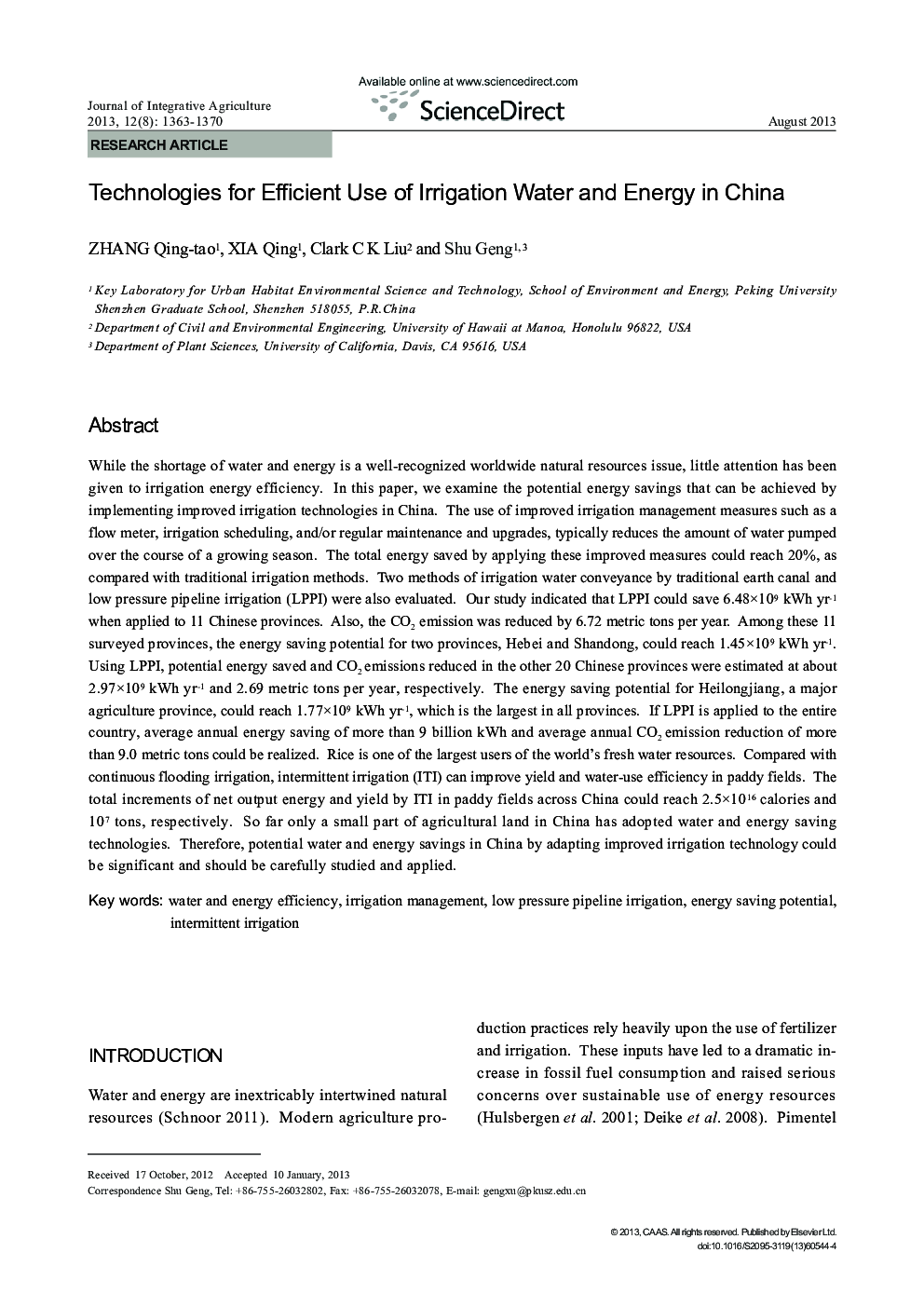| کد مقاله | کد نشریه | سال انتشار | مقاله انگلیسی | نسخه تمام متن |
|---|---|---|---|---|
| 4494936 | 1318735 | 2013 | 8 صفحه PDF | دانلود رایگان |

While the shortage of water and energy is a well-recognized worldwide natural resources issue, little attention has been given to irrigation energy efficiency. In this paper, we examine the potential energy savings that can be achieved by implementing improved irrigation technologies in China. The use of improved irrigation management measures such as a flow meter, irrigation scheduling, and/or regular maintenance and upgrades, typically reduces the amount of water pumped over the course of a growing season. The total energy saved by applying these improved measures could reach 20%, as compared with traditional irrigation methods. Two methods of irrigation water conveyance by traditional earth canal and low pressure pipeline irrigation (LPPI) were also evaluated. Our study indicated that LPPI could save 6.48×109 kWh yr−1 when applied to 11 Chinese provinces. Also, the CO2 emission was reduced by 6.72 metric tons per year. Among these 11 surveyed provinces, the energy saving potential for two provinces, Hebei and Shandong, could reach 1.45×109 kWh yr−1. Using LPPI, potential energy saved and CO2 emissions reduced in the other 20 Chinese provinces were estimated at about 2.97×109 kWh yr−1 and 2.69 metric tons per year, respectively. The energy saving potential for Heilongjiang, a major agriculture province, could reach 1.77×109 kWh yr−1, which is the largest in all provinces. If LPPI is applied to the entire country, average annual energy saving of more than 9 billion kWh and average annual CO2 emission reduction of more than 9.0 metric tons could be realized. Rice is one of the largest users of the world's fresh water resources. Compared with continuous flooding irrigation, intermittent irrigation (ITI) can improve yield and water-use efficiency in paddy fields. The total increments of net output energy and yield by ITI in paddy fields across China could reach 2.5×1016 calories and 107 tons, respectively. So far only a small part of agricultural land in China has adopted water and energy saving technologies. Therefore, potential water and energy savings in China by adapting improved irrigation technology could be significant and should be carefully studied and applied.
Journal: Journal of Integrative Agriculture - Volume 12, Issue 8, August 2013, Pages 1363-1370